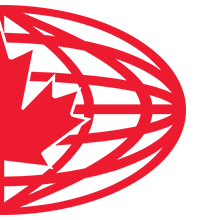In the turbulent world of travel insurance, unpredictability reigns supreme. With a decreasing number of insurers in the market, the prediction of loss ratios has become increasingly challenging. This volatility has led to rate increases across the board, with some insurers raising premiums throughout 2023.
Major Claims and Their Impact on Travel Insurance Rates
The realm of travel insurance is fraught with financial instability when major claims emerge. A single claim exceeding US$500,000 can significantly impact an insurer’s financial year. These claims, often resulting from severe medical emergencies abroad or catastrophic events, push companies to reassess their risk models and premium structures. In response, travel insurance companies have had to increase their rates significantly to cover the potential for such losses. The frequency of these large claims has been rising, possibly due to an aging demographic of travelers who may require more medical assistance or due to the increasing costs of healthcare in popular travel destinations.
Moreover, the presence of large claims not only affects the insurer directly but also impacts the broader market as it influences how competitive other insurers can be. Companies without robust financial backing may find themselves unable to compete, leading to less choice in the market and higher prices for consumers.
The Role of Reinsurance in Managing Insurance Costs
Reinsurance is an essential strategy used by travel insurance companies to mitigate the financial risks associated with large claims. By transferring portions of risk to reinsurance companies, travel insurers can stabilize their operations and maintain reasonable premium rates despite facing catastrophic claims. However, the cost of purchasing reinsurance is high and contributes directly to the overall cost of travel insurance products.
The “attachment point”—the limit beyond which the reinsurance coverage kicks in—plays a crucial role. It’s often set between $200,000 and $250,000, meaning any claim amount above this threshold is partly or fully handled by the reinsurer. While this helps protect insurance companies from massive losses, the costs associated with reinsurance agreements are reflected in consumer premiums. As the frequency and severity of claims increase, insurers may need to purchase more extensive reinsurance coverage, which could further drive up premium costs.
Environmental Factors Elevating Travel Insurance Rates
In recent years, environmental factors have become a significant concern for travel insurers. Extreme weather events, like heatwaves, can exacerbate health issues, leading to increased medical claims. For instance, the heatwaves affecting the Gulf of Mexico and forest fires in the Western U.S. have led to respiratory problems for many, escalating the number of claims filed for medical emergencies. These conditions put additional pressure on healthcare facilities, pushing up the costs covered by insurers. Such environmental risks are becoming more common and unpredictable, prompting travel insurance companies to adjust their rate structures accordingly. The integration of climate data into risk assessment models is becoming increasingly necessary, but it also introduces more complexity and uncertainty into the pricing of travel insurance policies.
Future Predictions for Travel Insurance Market Dynamics
Looking ahead, the travel insurance market is expected to continue facing volatility. With environmental changes and health risks at the forefront, insurers might need to adopt more dynamic pricing models that can quickly adapt to new risks. Additionally, technological advancements in data analysis and artificial intelligence could play a critical role in better predicting claim frequencies and sizes, potentially stabilizing the market.
However, as insurers adapt to these challenges, consumers must remain vigilant. They should seek out comprehensive policies that provide adequate coverage against a range of risks while also being mindful of the potential for rising costs. Education about the factors influencing insurance rates will be crucial for consumers to make informed decisions.
Conclusion:
The travel insurance sector is navigating through a period of significant adjustment. As insurers grapple with high claims, reinsurance costs, and environmental challenges, policyholders and potential customers must stay informed and considerate of the factors influencing rate changes. Understanding these dynamics is key to navigating the complexities of travel insurance in the years to come.
Key Takeaways:
- Major claims and reinsurance are primary drivers of increased travel insurance rates.
- Environmental factors like severe weather and health crises significantly impact premium costs.
- Technological advancements and better risk assessments are crucial for future market stability.
Tags: Comprehensive Travel Coverage, Travel medical insurance
